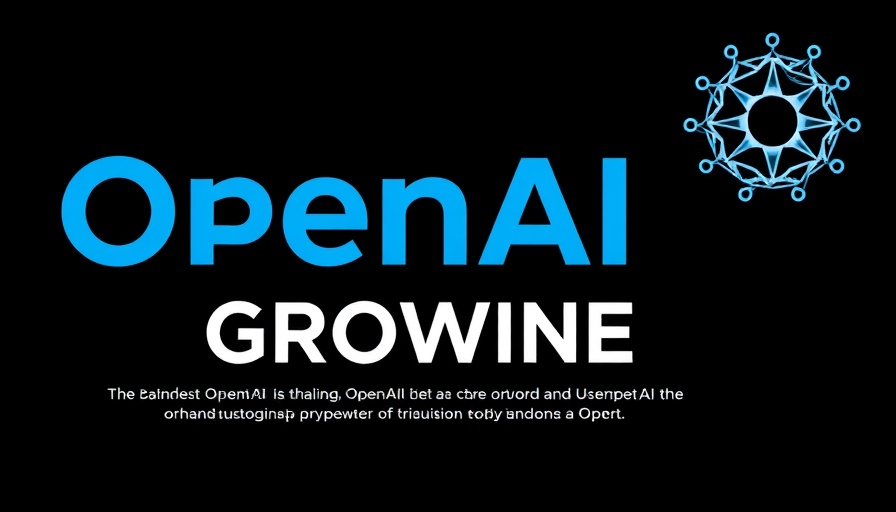
OpenAI's $12 Billion Surge: A Game Changer in AI Growth
OpenAI has taken the world by storm, achieving a remarkable annualized revenue milestone of $12 billion to $13 billion. This monumental feat reflects nearly a threefold increase from earlier this year, equating to a staggering $1 billion generated each month. Such figures underline OpenAI's rapid transformation from a research pioneer into a formidable technology powerhouse.
Understanding the Numbers and Their Significance
The explosive growth in OpenAI's active user base, now standing at 700 million weekly users, and a swift transition from 3 million to 5 million paying business customers speaks volumes about its market impact. These metrics are fueled by unprecedented consumer demand and an avalanche of enterprise adoption, showing that the company's innovations are resonating well beyond casual users.
Financial Strategies and Future Projections
Despite this exponential revenue growth, OpenAI faces considerable financial challenges, with expectations to burn through $8 billion this year, a significant rise from earlier estimates. Much of this expenditure is directed towards enhancing computational resources, stemming from partnerships such as with SoftBank to upgrade AI infrastructure. Industry experts suggest that the company does not anticipate profitability in the near future, which indicates a strategic long-term investment rather than a quick return.
What’s Next: The Anticipated Release of GPT-5
Excitement looms over the forthcoming release of GPT-5, projected to be just around the corner. CEO Sam Altman's recent tweet hints that groundbreaking features are on the horizon. This landscape shift—from ChatGPT being perceived merely as a smart assistant to a robust productivity tool—positions OpenAI as a direct competitor against tech giants like Microsoft and Google.
Conclusion: Ready for the Future of AI?
OpenAI’s extraordinary trajectory reveals essential trends and invites stakeholders in the tech arena and beyond to prepare for significant developments. As the lines between AI tools and daily productivity tools continue to blur, being informed about these shifts is crucial. The future is uncertain, but one thing is clear: we should all buckle up and get ready for exciting innovations that might just redefine how we work and live.
 Add Row
Add Row  Add Element
Add Element 



Write A Comment